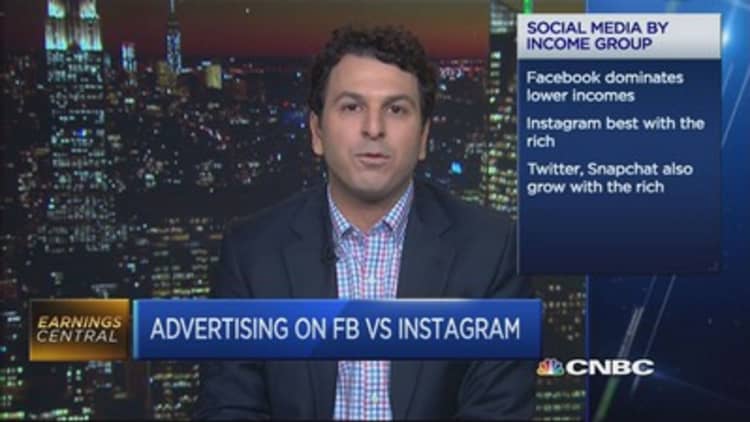
Not all social media platforms are created equal. And some of them have been considered trendier than others, as people migrate from one to another. We know all that. But what a lot of companies care about more is "where are the rich kids?"
Because it turns out not every social media platform has the same type of wealth represented. Instagram, which is owned by Facebook, is attracting a higher percentage of wealthy kids than its parent company, according to new data.
The founder of one online video company who spoke on condition of anonymity put it more succinctly: "Facebook is for poor people, and Instagram is for rich people." That wouldn't be surprising if you've seen the Rich Kids of Instagram blog or these 24 unbearably rich people on Instagram.
Here is the storyline quantified by Pew Research, which published this data set just this month. Pew said their "data reveals a distinct pattern in social media use by socio-economic status," and "teens from less well-off households ... are more likely than others to say they use Facebook the most."
Going up the income scale, Facebook's dominance is highly reduced, giving way to Instagram, Snapchat and Twitter. The highest percentage of Facebook usage happens at the lowest income level, and goes down as income rises. Facebook's popularity, while still in the lead, is the smallest at the highest income level. And relative to each platform's user base, Facebook's users have the lowest average income, the Pew data suggest.
In the case of Instagram, Snapchat and Twitter—their popularity levels are tops at the highest income levels. This leads to some clear differences in strategy for how a company might market to its audience.
Lacrosse players tend to come from higher income families ...Brian SelanderEVP, Whistle Sports
Take Whistle Sports for example, a youth-oriented digital sports network. If they are trying to promote their lacrosse star Paul Rabil, then Instagram might makes sense as a more efficient place to target more affluent youth. They probably don't hit the same audiences as they would for their basketball-themed network. (Even The Wall Street Journal previously reported on the connection between lacrosse and Wall Street.)
"Lacrosse players tend to come from higher income families than some other sports," Brian Selander, executive vice president of Whistle Sports, told CNBC, "but that doesn't mean Paul Rabil stays focused on just Instagram." (Rabil is America's most marketable lacrosse star.)
Part of this relates to the scale of Facebook's size—there are simply just more people on it than any other network. And there are still lots of affluent kids on the site, but as far as efficiency of targeting goes, Facebook's network has a lot of other people in the mix that might not be a targeted audience. Selander notes that what matters more is if "the creator and audience can most authentically engage."
Facebook did not immediately respond to a CNBC request for comment.


